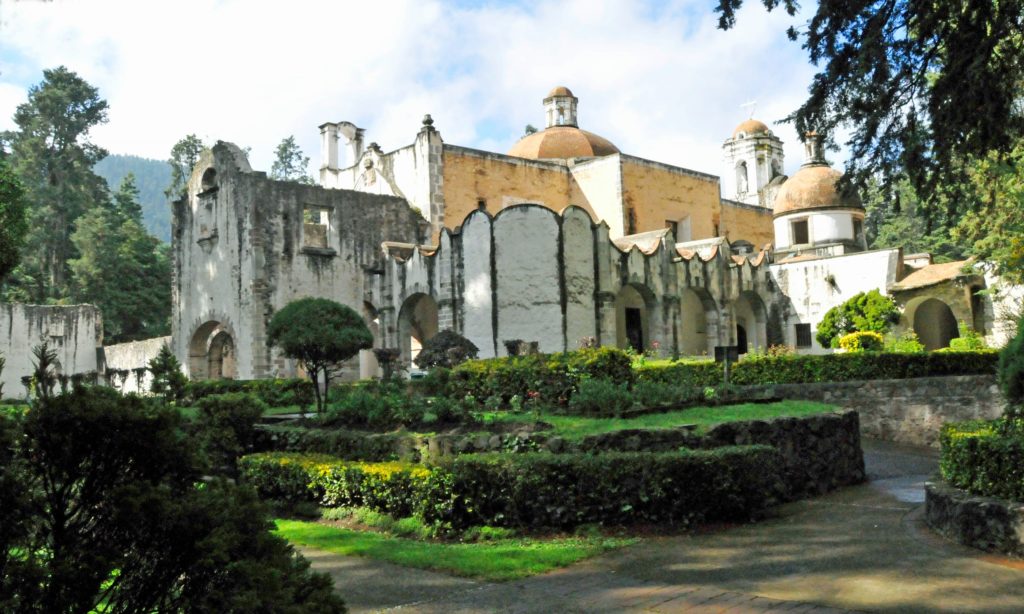
Much of Mexico City, a city of almost nine million people, is crowded and noisy. But an hour’s drive from the center of the city is a still-peaceful area that was once the home of unusual monks seeking to be closer to God.
In 1521, Spanish forces led by Hernán Cortés captured the area that is now Mexico City from the Aztecs. To help convert the indigenous people to Christianity, Catholic monks soon began arriving from Spain, including the so-called ”barefoot Carmelites” who claimed a spiritual linkage to Jewish hermits once living on Israel’s Mount Carmel. They got their name from the requirement that they walk barefoot and took vows of poverty, chastity and absolute silence. In 1606, after having established convents among the villages in the valley, the Carmelites built a convent in an uninhabited wooded area in the mountains west of the villages, about 5,000 feet above the valley floor, where they could meditate without distractions. In 1722, the monks demolished their deteriorating convent and replaced it with a still-standing domed structure that included a chapel and rooms for visiting monks. They named their 4600-acre site “Desierto de los Leones” (“Desert of the Lions”) after its isolated (deserted) location and the pumas prowling the forests.
By the middle of the nineteenth century, the Carmelites had abandoned the Desert of the Lions, which became Mexico’s first protected forest in 1876. After use as a military headquarters, the area became Mexico’s first national park in 1917. Today, the Desert of the Lions and its immaculately maintained grounds are within the boundaries of Mexico City. Some rooms within the convent building are now museums, illustrating the life of the monks who once lived there. The still-active chapel and gardens are popular for weddings and quinceañeras, parties recognizing a 15-year-old girl’s coming of age.
Comments are closed.